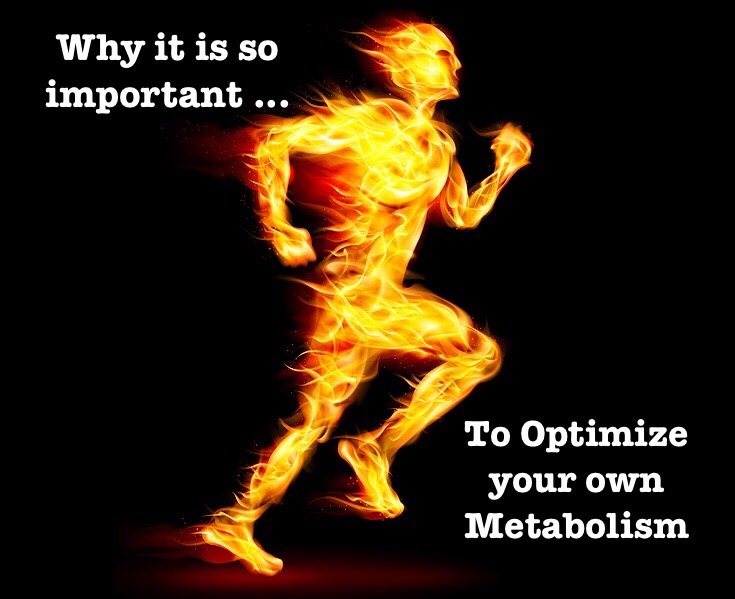Isn’t it About Time for a Fuel Change?

Metabolism is defined as: the chemical processes that occur within a living organism in order to maintain life. As humans, our metabolisms are relatively adaptive and flexible, but only to a point. If fueled improperly for extended periods of time, trouble can arise in many forms of metabolic disease (obesity, type 2 diabetes, heart disease, etc) Most of these metabolic disorders can be reversed by optimizing your metabolism. This means providing your body with the fuel that operates all of your body’s many systems properly. Sounds simple, right? Well, the crux of the problem is that most people are unaware that optimizing metabolism is as easy as changing their diet.
Metabolic diseases associated with diet are responsible for more than 60% of all deaths on this planet. Almost all of which could be prevented with education, sufficient resources, improved medical advice and most importantly, a proper diet. Unfortunately, a combination of misguided government interventions, the influence of food company lobbies and big pharma have kept our progress stuck in a holding pattern for more than four decades. Simultaneously, our country’s influence continues to lead the rest of the world down this same horrific path in pandemic proportions. Instances of obesity, diabetes, and dozens of other metabolic diseases have steadily increased in frequency over the past half century to the point of absurdity. Meanwhile the root causes of these reversible metabolic diseases are simply ignored and masked with superficial pharmalogical bandaids like statins, glucose lowering drugs and exogenous insulin. The nutritional advice dispensed by today’s medical community has been inadvertently skewed into misinformation by the influence of government subsidy programs, big pharma’s profit margins (disguised as innovation), and by the food industry’s powerful lobbies. It’s become increasingly clear that big business profits have taken a precedent over public health. Unfortunately, it has become imperative that individuals take charge of their own metabolic fate. Education and resources are unlikely to come from the “powers that be” in our lifetimes.
This is the part where I “lighten up” & share an overused & inadequate analogy to steer the reader towards understanding of my point:

If you haven’t figured it out already by the graphics associated with this article, the topic is metabolic fuel …essentially a debate comparing the efficiency of glucose from carbohydrate consumption to the efficiency of ketone bodies generated by the liver as a fuel source to drive your metabolism. After doing my research for this article (following my usual routine), I often check out articles already written on the subject, to see what approach others have taken. While undergoing this process, I discovered a notable trend. In almost every article I read, regardless of the source, the author inevitably uses a version of the same analogy to describe the chasm between these two metabolic fuel sources. Using unleaded gasoline to symbolize the glucose from carbohydrate consumption, and likewise diesel fuel to represent the ketone bodies generated by the liver. On the one hand, this analogy seems fair when you consider that most vehicles on the road today use unleaded gasoline, just as most people (now-a-days) fuel their bodies with carbohydrates. This is where the correlation ends, at least for me.
• Do motorists that use unleaded gasoline have to stop at a gas station to refuel every three to four hours regardless of whether they have been speeding down the highway, or sitting dormant in a parking lot? Of course they don’t.
• Do motorists that drive gasoline dependent vehicles feel the overwhelming need to let their cars take a nap after overfilling their gas tanks? Ridiculous, right?
Well, the other half of the analogy is equally preposterous:
• Though I’ve never owned a vehicle that uses diesel fuel, I find it highly doubtful that these drivers can power through days and days of constant use without refueling.
• AND diesel vehicles do not, on average, last any longer than their gasoline guzzling cousins. Again, a very weak analogy.

So, I’ve spent an inordinate amount of time trying to come up with a more accurate analogy:
Back in 1999, I experienced an enormous amount of personal success utilizing the Atkins diet. After remaining in the induction phase for a year, I managed to shed 100 lbs. Because this new way of eating had been so effective for me, I decided to remain in the induction phase. As a result, I managed to keep the weight off for the following 12 years. With the advantage of hindsight, I now realize that I was likely in ketosis (utilizing ketone bodies for energy) that entire time and didn’t even know it. In 2011, I abandoned this lifestyle. A loved one had convinced me that this way of eating was unhealthy and dangerous. For the 3 years that followed, I embraced the calorie restriction / low fat version of the Standard American diet (S.A.D.). In that short amount of time, I gradually gained back 60 lbs, started observing my insulin sensitivity deteriorate (a1c score increase), developed high blood pressure, sleep apnea and acid reflux. In 2014, my family doctor prescribed me a statin as a result of an elevated cholesterol count. This was the straw that finally woke me from my nutritionally ignorant coma.
What’s the point?
One must first understand that an individual can fuel their body with only one of these fuel sources at a time, predominately. I have spent large portions of my 50 years on this planet fueling my metabolism with each of these available fuel sources, at different times in my life. I believe that the chasm between the effectiveness of these two fuel sources are vast, to say the least. It would be like comparing an underpowered, overtaxed 9 volt battery that required replacement every couple of hours to the virtually limitless energy generated by the sun.
Before I let my enthusiasm get away from me, perhaps we should back up a bit and discover some of the science behind this claim. Let’s start with the basics:
Normal body cells metabolize food nutrients and oxygen during cellular respiration. A set of metabolic pathways in which ATP (adenosine triphosphate), our main cellular energy source is then created. Most of this energy production happens in the mitochondria, tiny cell particles which act as powerhouses, or fueling stations. There are two primary types of food-based fuel that our cells can use to produce energy:
GLUCOSE
• The first cellular fuel is glucose, commonly known as blood sugar. Glucose is a product of the starches and sugars (carbohydrates), and a portion of the protein in our diet. This fuel system is necessary, but it has a limitation. The human body can only store about 1000-1600 calories of glucose in the form of glycogen in our muscles and liver. The amounts stored depend on how much muscle mass is your body has available. Men are often able to store more because they have more muscle mass. Since most people use up about 2000 calories a day just over the normal course of a day, you can see that if the human body depended on only sugar to fuel itself, and food weren’t available for more than a day, the body would run out of energy quickly. Not good for sustaining life in a scenario where food is not always available. Much like the 9volt battery that we previously discussed.
KETONE BODIES
• The second type of cellular fuel comes from fat and fat metabolism products, called ketone bodies, that are generated by the liver. The average sized human body can store hundreds of thousands of calories in the form of fat, so it would be safe to say that this system of energy is almost unlimited, depending on how long one goes without food. (A quick reminder of the sun’s limitless energy in my earlier analogy) Eventually, it would get used up, but people have been known to fast for months and live through it. Not that I would ever recommend this, but this gentleman, Angus Barbiari, once fasted for nearly a year with no detriment to his health other than some obvious lean muscle mass loss.

When glucose levels are low, especially over time, most cells will switch to using ketone bodies for fuel. Ketones allow cells to be metabolically flexible, so to speak. Even the brain and nerve cells, which are heavily dependent on glucose, can utilize ketone bodies for fuel. This ability of normal cells to use ketones when glucose is unavailable indicates that your cellular mitochondria are healthy and functioning properly.
In addition, ketones have some unique properties which make them a cleaner fuel for your cellular use. Burning fat for fuel causes less oxidative damage to the cell, and actually makes it possible for the cell to create much more energy than it can from glucose.
Eating Healthy Dietary Fats Promotes the Burning of Body Fat

Your body can use both carbs and fat for fuel, but they are far from equals. When your body burns glucose as its primary fuel, it actually inhibits your body’s ability to access and burn body fat. With an everpresent supply of carbs, your liver shuts down the entire fat burning process, because it is unaware that it is needed.
When you eat the standard American diet, chances are you’ve radically reduced your ability to burn body fat for fuel. So, how do you get your body into fat burning mode? Part of the equation is to eat more healthy dietary fats. The other part of the equation is to limit carbohydrates. Fat is a far preferable fuel for your body as it burns far more efficiently and cleaner than carbs.
To effectively burn body fat, you may need as much as 50 to 85 percent of your daily calories to come from healthy monosaturated and saturated fats.

So, while it may seem ironic, eating more fat (and fewer carbs) will ultimately help your body to burn more body fat. There are other methods that can help you switch your body into fat burning mode as well. One reason so many struggle with their weight (aside from eating processed foods instead of real foods) is because they rarely if ever skip meals.
As a result, their bodies have adapted to burning sugar as the primary fuel, which downregulates enzymes that utilize and burn stored fat. Intermittent fasting can change that. By abstaining from food, your liver runs out of glycogen and then, just like that, starts to use up glycogen stored in your body.

Mounting evidence suggests high-fat, low carbohydrate diets may be the key that many people have been looking for, as it solves more than one problem. Not only does it help you shed excess body fat, it does so while improving metabolism, boosting overall energy levels, lowering inflammation, promoting optimal health and maximizing longevity in a number of different ways. Here are some effective ways to optimize your fat-burning ability:
• Limit your carbs to a maximum of 20 to 30 grams per day. You can consume as many high fiber veggies as you like. These carbs, that are surrounded by fiber, are typically quite low in net carbs. You would have to eat an ungodly amount for these foods to be a detriment.
• Limit protein to a maximum of 1 gram of protein per kilogram of lean body mass.
• Increase your intake of healthy fats to 70 to 85 percent of your daily calories.
As mentioned, you can kick the entire process up a notch by implementing intermittent fasting (IF), at least for a finite period of time while your body returns to a balanced state. After that, assuming you continue eating right, you’ll only need to intermittent fast on a maintenance basis. The unjustified fear of healthy dietary fat is one of the main reasons why we, as a country, are currently struggling with such high obesity, diabetes, and heart disease rates.
Ketosis is a natural energy state that your body uses to provide an alternative fuel when glucose is unavailable. It happens to us all when we fast or when carbohydrate intake is lowered to a minimum. The process of creating ketones is normal, and is an optimal metabolic state designed to fuel our metabolism if we go without food for long periods of time. Eating a diet that is low in carbohydrates and high in saturated and monounsaturated fat enhances this process without hunger. This process also alleviates the hunger pangs usually associated with fasting.
Here is Why Ketone Bodies are a Better Source of Cellular Fuel than Glucose:
So how does our body make ketones out of the stored fat, you ask? First of all, blood sugar and insulin have to be low enough to allow access to stored fat. If they are, stored fat in the form of triglyceride can be mobilized as a fuel source. A substance called hormone sensitive lipase (HSL) breaks the triglyceride compound down into one glycerol molecule, and 3 fatty acid molecules. These fatty acid molecules come in various lengths of carbon based chains. The fatty acids then flow into the bloodstream and are taken up by body tissues. Once in the cells, the fatty acids are transported into the mitochondria of the cell to be metabolized carbon by carbon in a process called beta-oxidation. As glucose levels fall and fatty acid levels in the blood rise, the liver cells ramp up beta-oxidation, which increases the amounts of a molecule called Acetyl-CoA. As the amount of Acetyl-CoA rises, it is shunted to a process called ketogenesis. Ketogenesis generates a ketone body called acetoacetate, and this ketone is then converted into the two other types of ketone bodies: beta-hydroxybutyrate, and acetone. Meanwhile, the glycerol part of the fat molecule gets converted into glucose in a process called gluconeogenesis.

As ketones levels rise in the body, the cells of heart, brain and muscles begin to use them for fuel. Once the body is using ketones as a main fuel source, there will be some profound and positive health benefits. Ketogenic diets are very effective for correcting cellular metabolic dysfunction. The high blood sugar of diabetes gets reversed, the seizures of epilepsy can be calmed, Alzheimers and Parkinsons symptoms are alleviated, extra weight can be lost, joint pain is diminished and so on. Like I mentioned before, my high blood pressure went down, my sleep apnea went away, and I no longer have issues with acid reflux. Many experts insist that a Ketogenic diet can also alleviate digestive disorders such as irritable bowel syndrome, Celiac and Crones disease.
In other words, the ketogenic diet is not a fad. The ketogenic diet has been around longer than any of us! It happened naturally in the days before sugars and processed grains. It is in fact, the way our bodies were designed to thrive. Ketosis is a natural state, and is a potent regulator of metabolic derangement. When formulated and implemented correctly, it can be extremely effective at reversing all kinds of health problems.

Carbohydrates are NOT Essential, But Glucose is. That’s Why Your Body Can Make its Own!
Although ketones are enormously beneficial, the body must still have some glucose, mostly for the brain and red blood cells. If a person goes without food for a long period of time, the body will break down fat and muscle to create glucose for the brain. Without some glucose, the brain will die and so will you. This brain glucose need is the main reason that registered dietitians insist on keeping alive the myth that carbohydrates are essential nutrients (meaning we have to eat them or we will die). This is incorrect, biochemically speaking. RDs neglect to take into account that the brain can use ketones for over half of its fuel requirements once carbohydrate intake is lowered and ketone production ramps up to full production. The process of gluconeogenesis can make all the glucose the brain needs, once the body is “fat adapted,” or good at burning ketones for fuel. So although glucose is essential for the brain, eating carbohydrates to make glucose is NOT essential, especially if you are in ketosis.

Most Researchers Don’t Understand Ketogenic Diets
The thing to remember about ketosis is that it takes a few weeks for the body to become fat adapted and switch to burning ketones for fuel once carbohydrate consumption is minimized. Also, carbohydrate intake levels have to be lowered enough (below 60 grams per day or lower depending on an individual’s insulin resistance levels) for ketone bodies to be made at a level that the brain can use. If you only lower carbohydrate intake a little, then the ketogenic process gets short circuited, and can’t do its job of taking over as a fuel source. Most unfavorable low carb studies which reported the “unhealthy effects” of a low carb diet were actually poorly designed, in that they weren’t long enough to account for the fat or keto-adaptation period, and they didn’t cut carbohydrate intake low enough to ramp up ketosis to the protective amounts needed by the brain.

Why Some Doctors Think that Ketosis is Dangerous:
Your doctor is likely confusing the dangerous condition of diabetic ketoacidosis with normal benign nutritional ketosis. They are distinctly different conditions.
Nutritional ketosis is a normal human condition. For the most part, we all enter into mild state of ketosis each time we go without eating for 6-8 hours, or have recently woke from a good nights sleep. The effects of ketosis vary with the individual, but ketones in the blood stream in normal amounts are not dangerous.
The process of generating ketones (ketogenesis) is kept in check by the presence of insulin in the body. Insulin regulates the flow of fatty acids from our fat cells, and it acts in a feedback loop to regulate ketogenesis. As long as insulin is circulating within the body, in general, the flow of fatty acids and the production of ketone bodies will be limited to a range that is not dangerous. In contrast, ketoacidosis is a condition associated with a lack of insulin. For example, it is most likely to manifest in type 1 diabetics who don’t inject enough insulin.
Dr. Jeff Volek and Dr. Steve Phinney are two of the foremost experts on the topic of ketosis and Ketogenic diets. This interview is lengthy, but well worth the watch:
Please click on the reference links and learn more about optimizing your metabolism, I mean, after all …
REFERENCES:
- http://www.ketogenic-diet-resource.com/gluconeogenesis.html
- http://www.ketogenic-diet-resource.com/diabetes-treatment.html
- http://www.ketogenic-diet-resource.com/alzheimers-disease.html
- http://www.ketogenic-diet-resource.com/parkinsons-disease.html
- http://www.ketogenic-diet-resource.com/best-weight-loss-program.html
- http://www.ncbi.nlm.nih.gov/m/pubmed/23801097/
- http://www.ketogenic-diet-resource.com/low-carb-dieting.html
- http://www.ketogenic-diet-resource.com/ketoacidosis.html
- http://www.ketogenic-diet-resource.com/insulin-resistant.html
- http://www.ncbi.nlm.nih.gov/m/pubmed/11569918/
- http://www.nature.com/ejcn/journal/v67/n8/full/ejcn2013116a.html
- http://www.ncbi.nlm.nih.gov/pmc/articles/PMC3321471/
- http://www.ncbi.nlm.nih.gov/pmc/articles/PMC3454573/
For the latest Videos & Articles on Ketogenic Nutrition, as well as encouragement, advise and Great Keto Recipes, everyone’s welcome in the Facebook Group: WELCOME TO KETO COUNTRY











Leave a comment